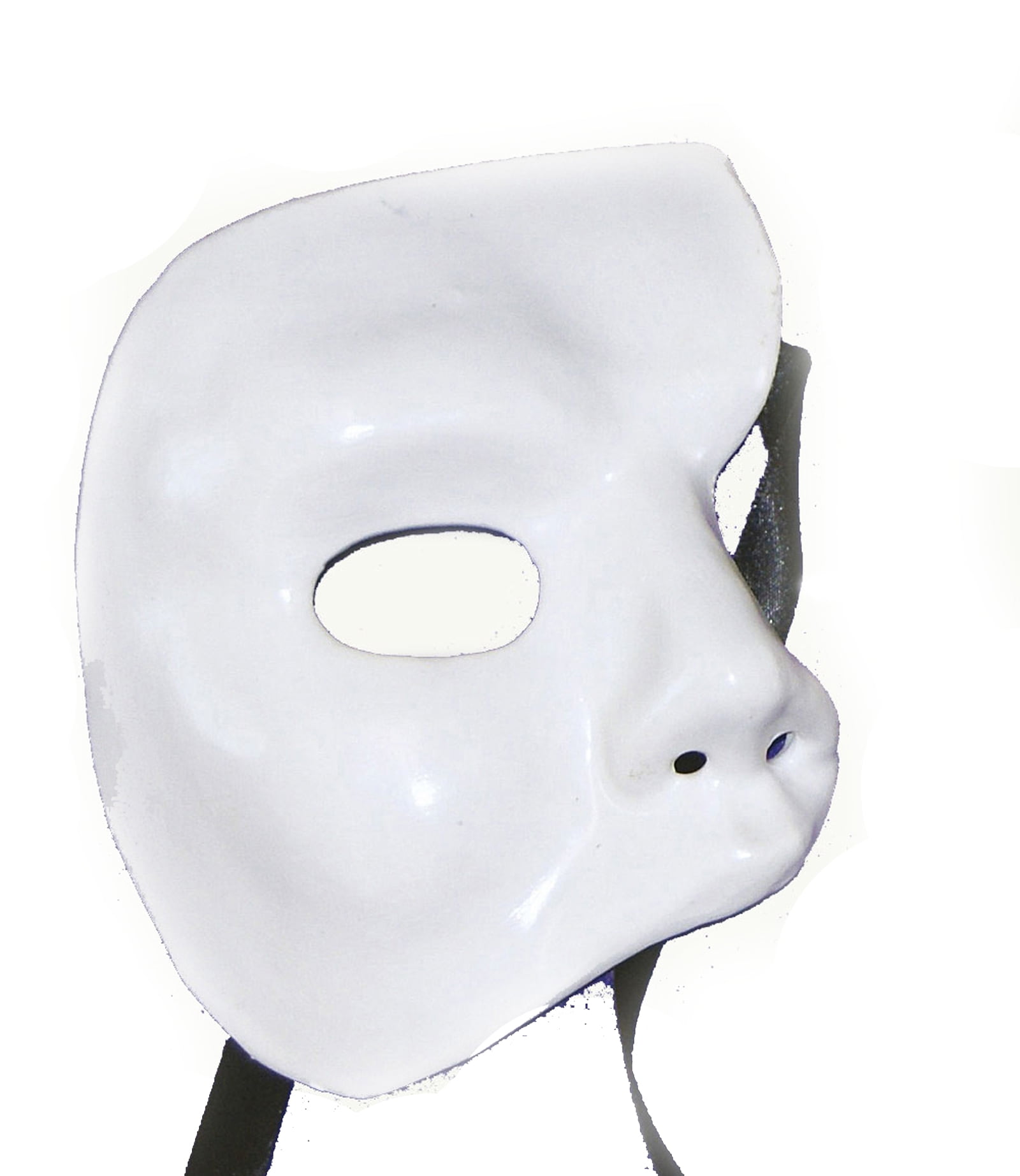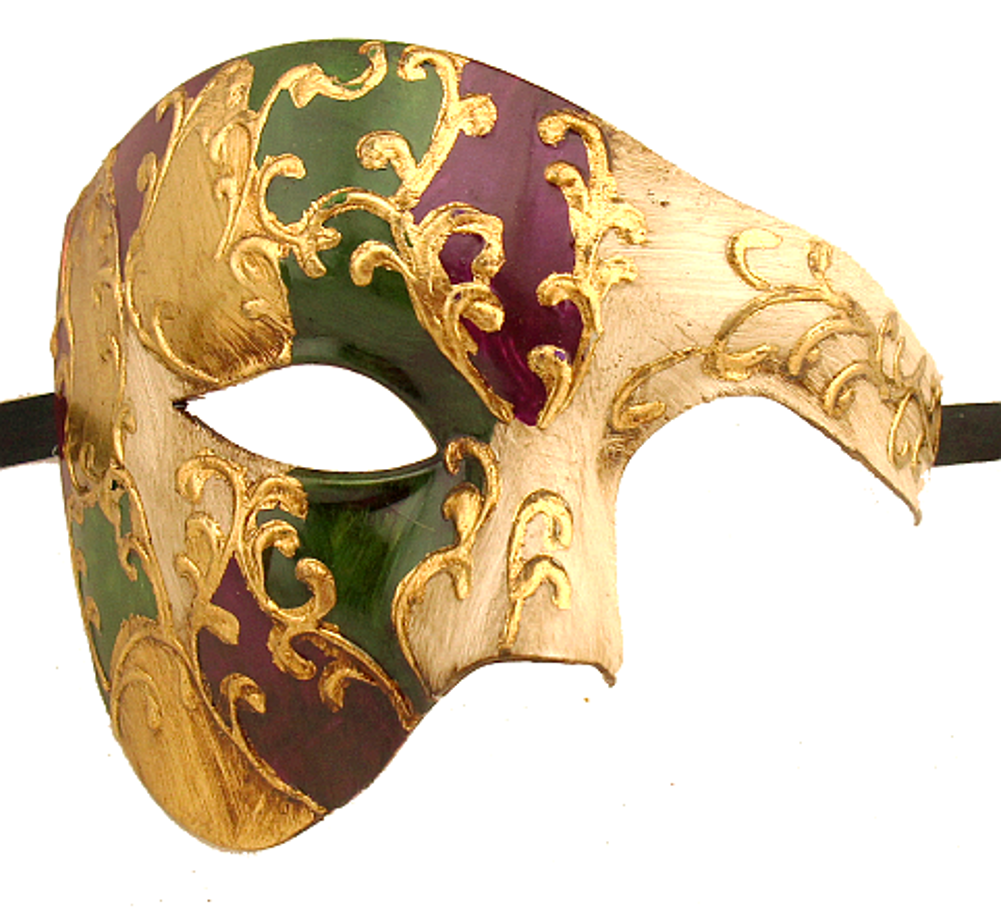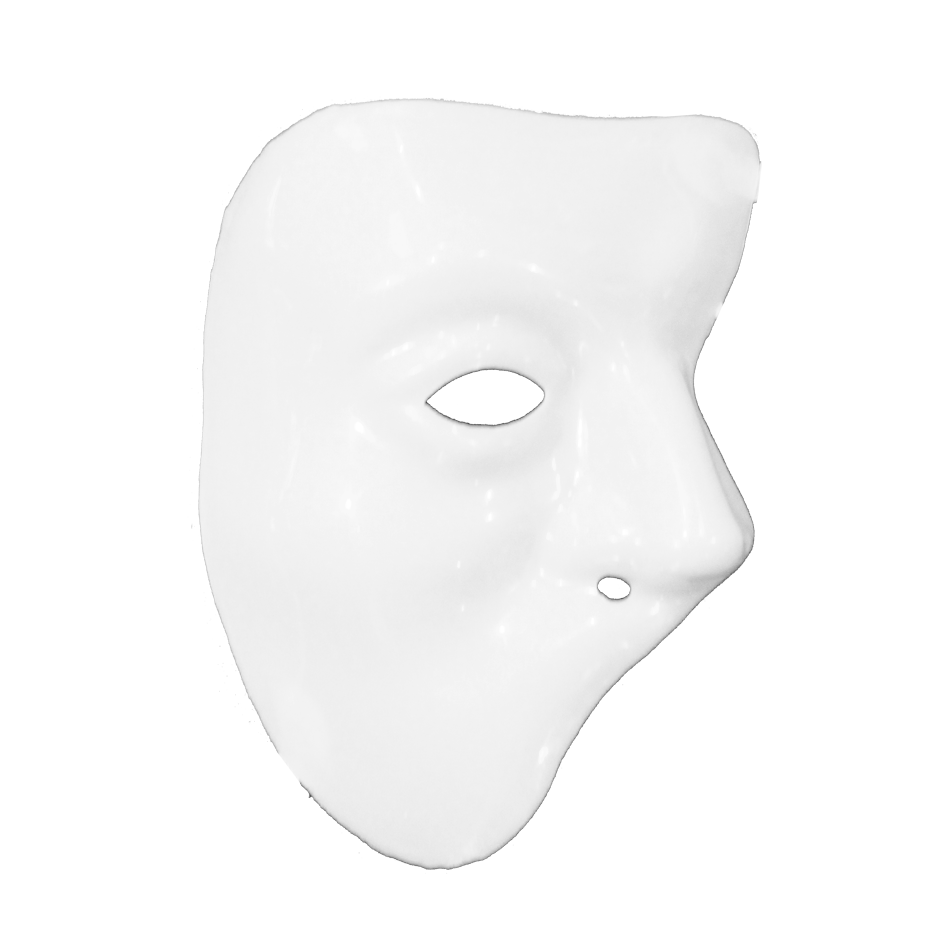
Accidents happen out of nowhere, all orchestrated by this malevolent being.

The character starts off as an unseen terror wrecking productions and threatening the crew.
The phantom of the opera mask movie#
But the one in the movie gives off an air of terror and later mystique. The mask is a basic masquerade mask in that it covers a portion of the face. Any mask is a Halloween mask, so that goes without saying. It’s also a pretty good option for a prom party or as part of a cosplay costume. To a point, where you can’t attend one without seeing at least one in attendance. The Phantom mask is a very good choice for a masquerade party. Lots of singing, shocked screaming, magic tricks, lighting effects, a dude going around scaring actors and an eye-catching mask. The story is about the Phantom’s obsession and how that plays out. But of course, there’s a regular love interest in the form of Patrick Wilson’s Raoul. He turns his attention towards Rossum’s character, Christine. The Phantom of the Opera of a man who lives below an opera, ‘haunting’ the actors and production for years. Patrick Wilson plays her love interest and a rival to the masked Butler. At this point, no one would’ve guessed she’d play a character like Fiona Gallagher on a show like Shameless. Playing the object of his obsession was Emmy Rossum as the young lead of the production. That should’ve been a deal-breaker considering opera adaptations have a lot of singing. His casting felt like a box-office move, in that he didn’t have singing experience. The names of the mask maker and the deformity maker (which sometimes is the same, and sometimes different companies) should be listed there.It starred Gerard Butler as the frightening Phantom of the opera. If you want specific names from specific productions, have a look at the credits in either programme/Playbill or the souvenir brochure. Or here, for Tomas Ambt Kofod and John Martin Bengtsson in Copenhagen, done by Thomas Foldberg at TFMUFX (who also did the masks): With a cast in place, the mask (and if needed, the deformity) can be custom made to that specific actor, like here for Mathias Edenborn in Hamburg: Here done by Chris Tucker, UK legend:Īnd here by Bob McCarron, special effects makeup who’s done a lot of the deformities for the World Tour: Their heads are literally covered in plaster, which has to dry as they sit there with only a small hole for the nostrils. The deformity and then the mask are made based on a mould of the actor’s face. The local specialists often do special makeup for movies and TV, and you can usually find them credited at the back of the programmes/Playbills and souvenir brochures. Internationally, productions has collaborated with either “the motherships” in West End or on Broadway, or went for local specialists. In West End they’ve kept custom making individual masks for their Phantom, which accounts for a bit more variety, while Broadway has choosen 3-4 main models, where the actor wears the one that fits the best.

But overall they stay the same from Phantom to Phantom. They’ve slowly been updated to feature new details - for example a more “angry” eyebrown, or different shading, or a less curved forehead.

The West End and Broadway productions has had its own, permanent mask makers. When the designer herself was around, she probably also had the liberty to veto or advice. I guess a mixture of what the head of makeup and/or costume wants, what the supervisor approves, and how much liberty the mask maker is given. (from left: Ethan Freeman in Essen, Michael Crawford in West End and Yuichiro Yamaguchi (?) in Tokyo) But as you point out, there’s been a great variety through the decades and from production to production. I mean, the main design is as always by Maria Bjørnson.


 0 kommentar(er)
0 kommentar(er)
